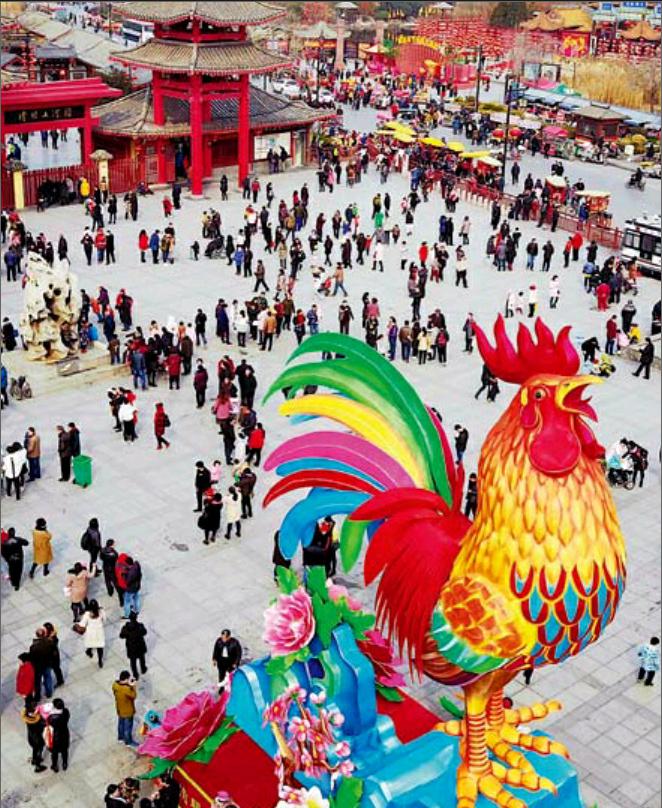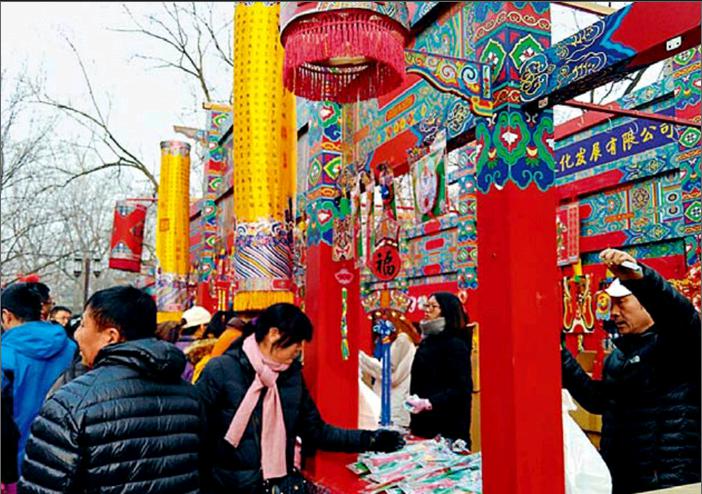Beijing Welcomes The Year of the Rooster
2017-04-10byNickLanigan
by+Nick+Lanigan


The Spring Festival is a time for food, family and fireworks for people all across China. With more Chinese people than ever before working away from their hometowns, the holiday travel rush has now famously become the largest human migration in history, as millions of people make their way home for a family reunion and a well-deserved break. In the past, I made the most of the Spring Festival holiday to travel and explore other parts of China—so despite the fact that Beijing is the only Chinese city I have ever called home, I had never spent the festival here. This year, I decided to spare myself the stress of taking a train or plane alongside almost the entire Chinese population, and see how the nations capital saw in the Year of the Rooster.
In 2017, the eve of the Lunar New Year fell on January 27, meaning that the New Year itself was upon us almost as soon as the holiday had begun. The excitement was palpable as the CCTV New Year Gala began on TV, and a few eager revelers began setting off fireworks before midnight was even close. That, however, was nothing compared to the noise when the clocks actually did strike twelve. I stepped out with my neighbors as they set off endless firecrackers outside our building, and there were so many fireworks going off in every direction that it was almost impossible even to look at them all. Within minutes, all we could smell was smoke; the fireworks continued unabated for hours.
Im lucky enough to live very close to Ditan Park (or the Temple of Earth), dating back to the Ming Dynasty (1368-1644), in the northern part of central Beijing, and I had heard great things about the traditional temple fairs that were to take place there over the Spring Festival period. I had, however, somewhat underestimated the number of other people that would also be attending. In the run-up to the holiday, whenever my Chinese friends and colleagues discovered that I was staying in Beijing, they responded invariably, “But Beijing will be so empty!” In the days before the Lunar New Years Eve, that seemed to be correct. Subway trains were half-empty, roads were quiet, and many shops closed. Then, on the first day of the New Year, when the dust had barely settled from the fireworks the night before, I looked out of my window to see huge crowds of people swarming towards the park, and traffic at a standstill as drivers tried to find a space to park. To me, if anything, it seemed busier than a normal Beijing day!
The park had gone all-out on decorations, with red lanterns on every tree and covered walkways featuring traditional Chinese designs. A stage had been set up in an open area, where different music and dance performances took place throughout the day. Stalls sold snacks and drinks, and families lined up to take their chances at various competitions, hoping to win a stuffed toy. There were also some distinctly less traditional sides to the celebration—one popular attraction was an interactive Virtual Reality (VR) experience, where visitors could pay to spend time in adventurous or even other-worldly surroundings with the help of a set of VR glasses. The parks celebrations continued in a similar vein for the rest of the Spring Festival week.
Another local attraction is the Yonghe- gong, or Lama Temple, a Tibetan Buddhist monastery which is especially popular during the Spring Festival. During this time, people traveled from far and wide to begin the year with prayers and incense offerings to the huge Buddhist statues housed in the monasterys courtyards and pavilions. Despite the crowds, the majestic temple somehow managed to retain its aura of calm and serenity, and the scent of incense floated beyond the temple walls to fill the street outside with Tibetan flavor.
Elsewhere around Beijing, apart from the fact that a lot of smaller businesses and restaurants were closed, life continued much like normal. Families with children took advantage of the cold, bright weather to go ice skating on the frozen Houhai Lake, whilst tourists flocked to the shops and cafés of Nanluoguxiang like any other time of the year. Beijings bus and subway system was as efficient as ever—perhaps even more so, given the reduced traffic—and larger shops and attractions remained open throughout the week, catering to those who were using the holiday period to visit Beijing from other parts of the country.
All in all, my experience of the Spring Festival in Beijing was one of a city acknowledging the most important cultural celebration in its calendar, whilst also trying to keep things moving as seamlessly as possible. It would be impossible not to notice the festival, even without the fireworks—red lanterns appear on every street light, and decorations adorn doors and windows on every corner—but it is very possible to live through it with relatively little disruption. As a foreigner in Beijing, it is easy to feel as though the Spring Festival isnt something that is personally relevant. After all, much like Christmas in the Western world, it is first and foremost a celebration of family. But in my experience, youd be hard-pressed not to feel at least a little of the excitement that comes along with it.